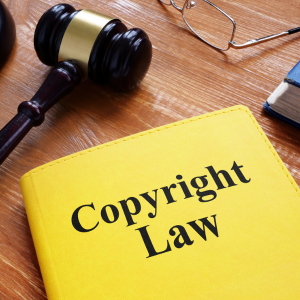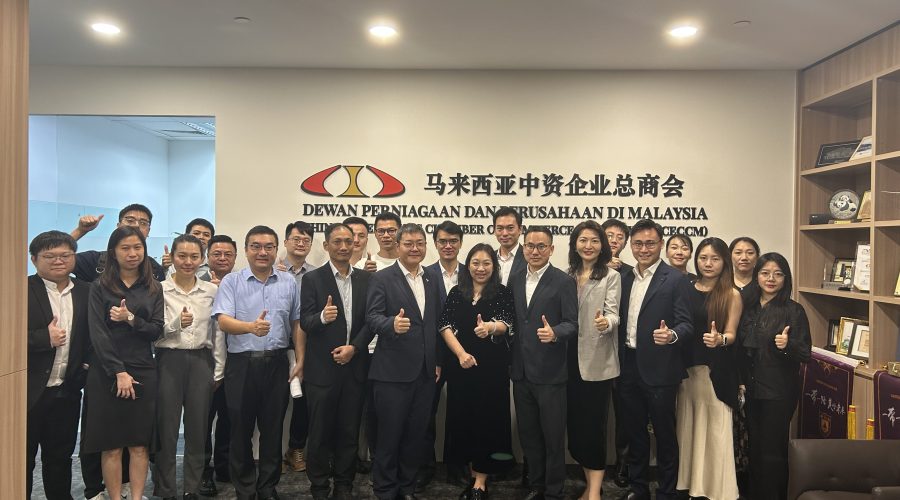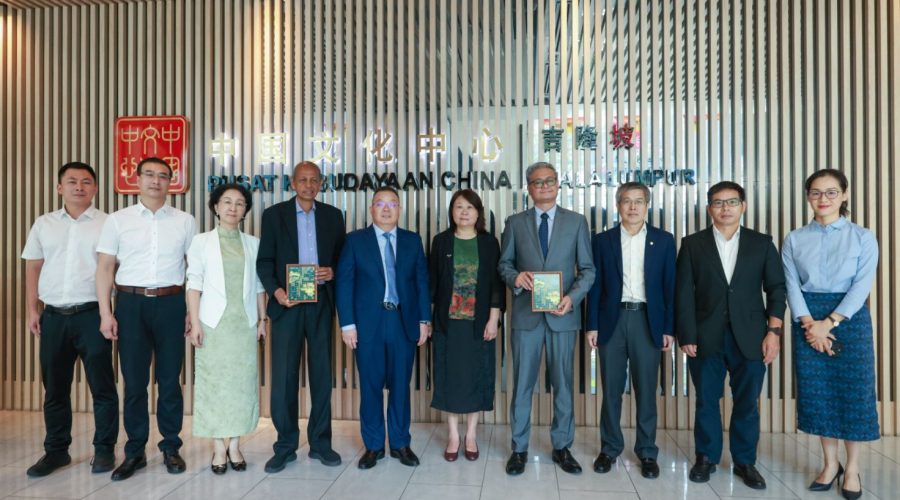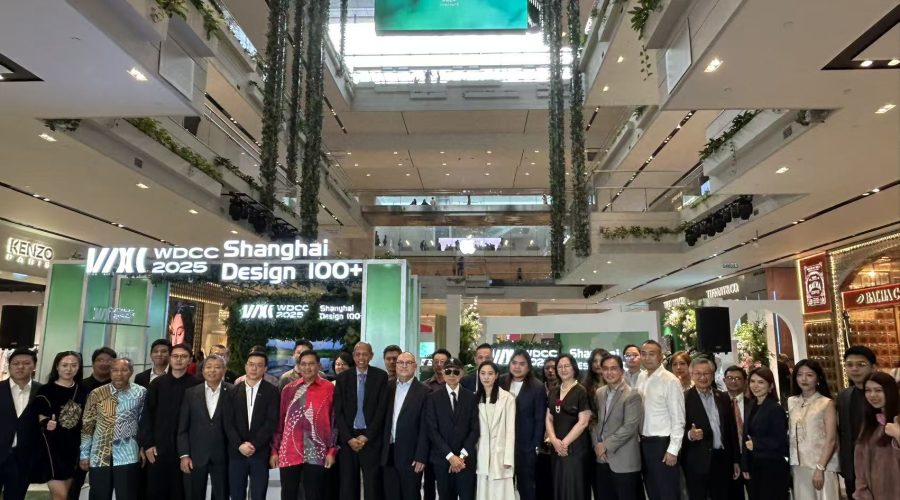The intellectual property laws in Malaysia are predominantly codified and are largely based on English models. While English judicial decisions and, to a lesser extent, other Commonwealth judicial rulings are considered by Malaysian courts, they are regarded primarily as persuasive authority rather than binding precedent.
Malaysia has specific national legislations covering trademarks, copyrights, patents, industrial designs, geographical indications, layout designs, new plant varieties, and optical discs.
As a signatory to several international treaties, Malaysia is bound by agreements such as the Berne Convention, Paris Convention, WIPO Copyright Treaty, WIPO Performances and Phonograms Treaty, Nice Agreement, Vienna Agreement, Convention on Biological Diversity, Trade-Related Aspects of Intellectual Property Rights (TRIPS) Agreement, and the Patent Cooperation Treaty.
The Intellectual Property Corporation of Malaysia (MyIPO) is responsible for the registration of trademarks, patents, industrial designs, layout designs, geographical indications and voluntary notification of copyright. The Plant Varieties Board of the Ministry of Agriculture oversees the registration of new plant varieties.
Civil and criminal intellectual property cases are adjudicated by specialized intellectual property courts. Enforcement actions fall under the jurisdiction of the Enforcement Division of the Ministry of Domestic Trade and Cost of Living (KPDN) as well as the Customs Department.
TRADEMARKS
General
In Malaysia, trademarks are protected under the Trademarks Act 2019, which ensures that businesses can protect their brand identity and prevent others from using similar marks that could confuse customers. A trademark is any sign (like a logo, word, symbol, etc.) capable of distinguishing the goods or services of one enterprise from those of others, as long as they can be graphically represented.
Requirements for Registration
To register a trademark, it must be distinctive, meaning it should clearly identify the source of the goods or services and not be too generic or descriptive. It must not be deceptive, ensuring it does not mislead consumers about the nature, quality, or geographical origin of the goods or services. Additionally, it should not conflict with existing registered marks to prevent consumer confusion.
Process of Registration
To register a trademark in Malaysia, an application is submitted to the MyIPO. The process includes an examination to ensure the trademark is distinctive, followed by a publication period for opposition. If no oppositions are raised, the trademark is officially registered.
Duration of Protection
A registered trademark in Malaysia is valid for 10 years from the filing date and can be renewed indefinitely for further 10-year periods as long as renewal fees are paid.
Rights of Trademark Owner
Registered trademark proprietors are granted the exclusive rights to use the trademark and authorise others to use the trademark for goods or services for which the trademark is registered. The registered trademark may also be licensed, sold, or used as collateral.
A registered trademark proprietor may bring an action for trademark infringement against the unauthorised use of their trademark while unregistered trademarks are protected under the common law tort of passing off. It is common for registered proprietors to bring an action for trademark infringement and passing off in the same proceedings. The reliefs sought in the proceedings typically include interim or permanent injunctions, an order for delivery up or destruction of the goods, summary judgment and/or damages or account of profits. Parties may also opt for Alternative Dispute Resolution (ADR) avenues such as mediation or arbitration. The Trademarks Act 2019 also provides for various criminal offences (which may result in fines of up to RM1 million for certain offences, and imprisonment of up to 5 years).
The Basket of Brands initiative by the KPDN helps brand owners protect trademarks and combat counterfeiting by allowing them to register their brands for enforcement without filing a formal complaint. These brand owners may also lodge complaints with the Ministry for investigations to be commenced. Additionally, the Trademarks Act 2019 provides border measures, requiring brand owners to file objections with MyIPO to prevent counterfeit imports. If approved, they must provide a deposit, and Customs will take enforcement actions, including raids and seizures.
PATENTS
General
Patents in Malaysia are governed by the Patents Act 1983. A patent is an exclusive right granted to the patent owner of a new and useful product or process including an improvement to an existing product or process of making a product that gives a technical solution to a problem.
Requirements for Registration
An invention can only be patented if it satisfies the following three criteria:-
it is new – the invention must not have been made known to the public anywhere in the world before the priority date claimed. Note that a prior disclosure may be disregarded if (a) it occurred within one year preceding the date of the patent application and if such disclosure was by reason or in consequence of acts committed by the applicant or his predecessor in title; or (b) if such disclosure occurred within one year preceding the date of the application and if such disclosure was due to any abuse of the rights of the applicant or his predecessor in title.
it has an inventive step – the invention must not be obvious to a person skilled in the art of the technological field of the invention; and
it is capable of industrial application – the invention must be useful and capable of being made or used in any kind of industry.
Process of Registration
To register a patent in Malaysia, an application must be filed with MyIPO. The application undergoes a formal examination to check if it meets procedural requirements, followed by a mandatory substantive examination to ensure the invention is new, non-obvious, and industrially applicable. If approved, the patent will then be granted.
Duration of Protection
A patent in Malaysia is valid for 20 years from the filing date, subject to annual prescribed fees.
Rights of Patent Holders
Patent owners have the exclusive rights to exploit the invention covered by the patent, to assign or transmit the patent and conclude licence contracts. The owner of the patent also has the right to institute infringement proceedings against any person who has infringed or is infringing the patent and if successful, obtain remedies such as injunctions to prevent further infringement and an award for damages. Parties may also opt for ADR avenues such as mediation or arbitration.
However, note that certain uses of patented inventions are exempt from infringement, such as use for scientific research purposes.
COPYRIGHT
General
In Malaysia, copyright is governed by the Copyright Act 1987, which grants protection to original works like books, music, films, and software. As a branch of intellectual property law, copyright regulates the use of creative expressions of authorship, focusing solely on the expression of an idea rather than the idea itself.
Copyright Protection
Copyright arises automatically once the following four criteria are fulfilled.
the work is original in the sense that it has not been copied from another work and sufficient effort has been expended to create it.
the work is recorded or reduced to a material form.
the work belongs to one of the categories of the protected work listed in the Copyright Act 1987
the work has complied with qualifications for copyright. This means that the work:-
was made by a citizen or permanent resident of Malaysia or a Berne country, or by a company incorporated in Malaysia or a Berne country;
being a broadcast, it was transmitted from Malaysia or a Berne country;
being a work of architecture, it was erected in Malaysia or a Berne country or being any other artistic work was incorporated in a building located in Malaysia or a Berne country; or
was first published in Malaysia or a Berne country (and not elsewhere) or it was published in Malaysia or a Berne country within 30 days of its first publication elsewhere.
Voluntary Notification
While registration is not mandatory, it is advisable to file a Voluntary Notification with MyIPO to record the copyright. This serves as proof of subsistence and ownership of copyright which will be helpful in enforcement.
Duration of Protection
The duration of copyright protection varies depending on the type of work. Literary, musical, and artistic works are protected for the life of the author plus 50 years after their death. Cinematographic works enjoy copyright protection for 50 years from the year they were first made available to the public, while sound recordings are protected for 50 years from the year they were made or first published. Similarly, broadcasts are protected for 50 years from the year they were made.
Rights of Copyright Owners
Copyright owners have the exclusive right to control, among others, the reproduction, performance, showing, playing, or distribution, communication, importation, sale and exhibition of their works. Copyrighted work may also be licensed, sold or used as collateral.
Copyright owners may take civil action against the infringement of their copyrighted works to claim for remedies such as injunctions to stop the infringing activity, actual or statutory damages, or an account of profits. Criminal proceedings may also be instituted for copyright infringement which may result in fines of up to RM500,000, and imprisonment of up to 10 years. The court may also order the delivery or destruction of infringing copies. In cases of piracy, such as illegal online streaming or file-sharing, criminal liability may apply. In Malaysia, the enforcement division of the KPDN and/or the Royal Malaysian Police handle the criminal prosecution of copyright infringement cases. Parties may also opt for ADR avenues such as mediation or arbitration.
Industrial Designs
General
Industrial designs in Malaysia are governed by the Industrial Designs Act 1996. An industrial design is the aesthetic feature of an article, i.e. features of shape, configuration, pattern or ornament, which is applied to an article by any industrial process or means and has eye appeal.
Requirements for Registration
An industrial design is registrable if it has an eye appeal and is new. The industrial design must be new, meaning it should not have been disclosed to the public before the application date of the application, either in Malaysia or elsewhere, or covered by an earlier application. Exceptions include disclosures in official exhibitions or unauthorised disclosures within six months before the application filing date.
Process of Registration
To register an industrial design in Malaysia, an application must be made to MyIPO with visual representations of the design. The application must also contain a statement of novelty concerning the industrial design. The application is examined to ensure it meets the requirements, and if approved, the design is registered.
Duration of Protection
The initial period of protection for an industrial design is 5 years from the date of registration. This protection can be renewed up to 4 times, each for a further 5 years, allowing for a total of 25 years of protection.
Rights of Industrial Design Owners
Registered industrial design owners have the exclusive right to make, import, sell, hire or offer or expose for sale or hire, any article to which the registered industrial design has been applied. The rights to the design may also be assigned or transmitted. Legal proceedings may be instituted against a person infringing any of the owner’s rights conferred by registration, or who has performed acts which make it likely that an infringement will occur.
The remedies that may be sought in an infringement action include injunctions to stop the infringing activity, actual or statutory damages, or an account of profits. The court may also order the delivery or destruction of infringing goods. In cases where consumers are misled into thinking an infringing product is the original, a passing off action may be pursued. Industrial design infringement is also a criminal offence in Malaysia, punishable by fines of up to RM15,000, and imprisonment of up to 2 years. Parties may also opt for ADR avenues such as mediation or arbitration.
However, note that any claim for infringement must be made within 5 years from the date of the infringement.
Protection of New Plant Varieties Act 2004
General
In Malaysia, the Protection of New Plant Varieties Act 2004 protects new plant varieties developed by breeders, farmers, local communities, and indigenous groups. The term “plant” under the Act covers living organisms in the plant kingdom, excluding any micro-organism.
Requirements for Registration
To qualify for protection, varieties must be new, distinct, uniform, and stable (or identifiable for traditional/farmer-developed varieties).
Process of Registration
To register a new plant variety, an application shall be made to the Plant Varieties Board, including information about the genetic sources and development methods. The Board conducts a preliminary examination, and if no issues arise, a clear report is issued. The applicant must then request a substantive examination, during which any necessary observations or amendments may be filed. If the variety meets the requirements, it is published in the Gazette for opposition. If no opposition is filed, or if any opposition is successfully addressed, the applicant must deposit samples before the final issuance of the Certificate of Registration and the grant of Breeder’s Rights.
Duration of Protection
Protection lasts for 15 years for farmer-developed varieties, 20 years for standard varieties, and 25 years for trees and vines.
Rights of Breeders
As the owner of a registered plant variety, the exclusive right extends to producing, reproducing, selling, marketing, exporting, importing, and stocking the variety for commercial purposes. These rights also cover propagating material obtained without authorization, plant varieties essentially derived from the registered variety, and other varieties not clearly distinguishable from it. However, certain actions are excluded from the rights conferred by plant variety protection. These exclusions include acts done for private and non-commercial purposes, as well as acts done for experimental purposes. Additionally, protection does not apply to acts done for the purpose of breeding other varieties, or to the propagation of registered plant varieties by small farmers using harvested material on their own holdings. The exchange of reasonable amounts of plant materials among small farmers is also excluded from the protection. Furthermore, the sale of farm-saved seed is exempt in situations where a small farmer cannot use the saved seeds on their own holdings due to factors beyond their control.
Unauthorised use of a registered plant variety may be subject to legal action. Remedies include civil proceedings such as injunctions to stop the infringement, claims for damages, or an account of profits. In cases of imminent infringement, the court may grant an injunction to prevent unauthorised use. For a quicker resolution, parties may consider ADR, such as mediation or arbitration.
Optical Disc Act 2000
General
In Malaysia, the Optical Discs Act 2000 regulates the manufacture of optical discs (CDs, DVDs, LDs, MDs, and other laser-readable digital storage devices) to combat piracy. It mandates licensing for manufacturers and requires proper marking of discs for identification. An optical disc is any medium or device capable of storing data in digital form and readable by a laser, including CDs, DVDs, laser discs, and mini discs.
Requirements for Registration
To obtain a license, applicants must be engaged in the business of manufacturing optical discs and meet conditions set by the Controller of Optical Discs. Manufacturers must ensure their production does not involve infringing copyrighted content, and all optical discs must be marked with a unique manufacturer’s code.
Process of Registration
An application for a license must be submitted to the Controller of Optical Discs along with the required documents and fees. The Controller may grant or refuse the license. If granted, the manufacturer receives a unique manufacturer’s code for marking their discs. Licenses are subject to conditions and can be revoked if the manufacturer fails to comply with the Act.
Duration of Protection
Licenses are valid for up to 3 years and are non-transferable without the Controller’s approval. It must be renewed before expiry to continue operations legally.
Rights of Licensees
Licensed manufacturers have the right to legally produce optical discs in compliance with the Act. They must display their license at their premises, maintain proper records of production, and ensure all discs are properly marked.
Unauthorised manufacturing of optical discs may be subject to legal action. This includes civil proceedings (such as injunctions to stop production, claims for damages, or an account of profits) and criminal proceedings (which may result in fines of up to RM 1,000,000 for companies, RM 500,000 for individuals, or imprisonment of up to 6 years). Additionally, enforcement authorities have the power to inspect licensed premises, seize unlicensed optical discs, and revoke licenses for non-compliance. Remedies for violations may also include the forfeiture or destruction of infringing discs. For a quicker resolution, parties may consider ADR, such as mediation or arbitration.
Layout-Design of an Integrated Circuit Act 2000
General
In Malaysia, the Layout-Design of an Integrated Circuit Act 2000 protects the three-dimensional layout designs of integrated circuits (IC). A layout-design of an integrated circuit is the three-dimensional disposition of the elements of an integrated circuit and some or all of the interconnections of the integrated circuit or such three-dimensional disposition prepared for an integrated circuit intended for manufacture.
Requirements of Registration
To qualify for registration, a layout-design must be original, demonstrating that it is the creator’s own intellectual effort and not a simple replication. It must also be distinctive, setting it apart from existing designs. Furthermore, the layout-design must have been commercially exploited or fixed within a semiconductor product. The applicant must be a qualified person, which includes Malaysian citizens, residents, and companies, as well as nationals of WTO member countries or those with relevant treaties with Malaysia. Finally, the application must be supported by thorough documentation and representations of the layout-design.
Process of Registration
To register a layout-design in Malaysia, an application must be made to MyIPO. MyIPO then conducts an examination to ensure the application meets the Act’s requirements. Upon acceptance, the application is published for public inspection, allowing for potential oppositions. If no successful oppositions are received or if they are resolved in favour of the applicant, MyIPO registers the layout-design and issues a certificate of registration to the proprietor.
Duration of Protection
Protection lasts for 10 years from first commercial exploitation or 15 years from creation, whichever is earlier.
Rights of Layout-Design Proprietors
Layout-design proprietors have the exclusive right to reproduce, import, sell, and distribute the registered layout-design. These rights may also be licensed or assigned to others.
Unauthorised use of a registered layout-design may be subject to legal action. This includes civil proceedings such as injunctions, claims for damages, or an account of profits. In cases of wilful infringement, criminal penalties may apply, and the court may order the delivery or destruction of infringing goods. However, certain acts do not constitute infringement, such as reproductions for private, non-commercial purposes, use for evaluation, analysis, research, or teaching, and independently created layout-designs that meet originality requirements. A person who unknowingly commercially exploits an unauthorised layout-design is also not liable. Parties may also opt for ADR avenues such as mediation or arbitration.
However, note that any claim for infringement must be made within 6 years from the date of the infringement.
Geographical Indications Act 2022
General
In Malaysia, geographical indications (GI) are governed by the Geographical Indications Act 2022 for specific categories of goods such as wine, coffee, tea, and textiles. GIs are geographical expressions used in trade to identify specific goods, signifying not only their geographic origin but also the unique qualities or characteristics associated with that location. A GI protects products that have a specific geographical origin and possess qualities or reputation due to that origin.
Requirements for Registration
To register a GI, an application must be filed with the Registrar of Geographical Indications, specifying the goods it applies to and paying the prescribed fee. If a variant of a geographical indication is sought, a separate application is required. If the geographical indication includes non-Roman characters or a language other than Malay or English, a transliteration and translation must be provided. Only persons involved in the production of goods from the geographical area, an association of such persons, or a competent authority may apply. The Registrar determines whether the goods fall within the specified categories for registration. Failure to meet these requirements within the prescribed period will result in the application being deemed withdrawn.
Process of Registration
To register a GI, an application must be filed with the Registrar of Geographical Indications. Once the Registrar has checked the application for compliance with formal requirements, the Registrar will proceed to advertise the application. During this time, the application is made public. After the application is advertised, any interested person may oppose the application within two months from the date of the advertisement.
Duration of Protection
A registered GI is protected for 10 years and can be renewed indefinitely in 10-year periods.
Rights of GI owner
The owner of a registered GI has the exclusive right to use the GI and authorise other persons to use the GI. The registered GI may also be transferred to another person upon application of the registered proprietor.
Unauthorised use of a registered GI may be subject to civil proceedings, including injunctions to prevent any unlawful use, claims for damages, or an account of profits. In cases of misleading use or unfair competition, the court may grant additional remedies as it deems fit. Enforcement measures may also include border protection mechanisms to prevent the importation of goods falsely bearing the GI. Parties may also opt for ADR avenues such as mediation or arbitration.






